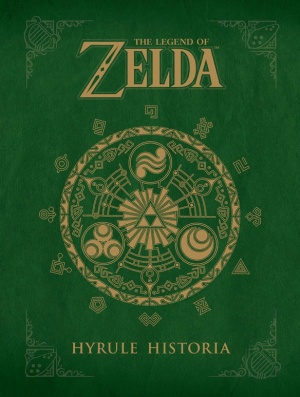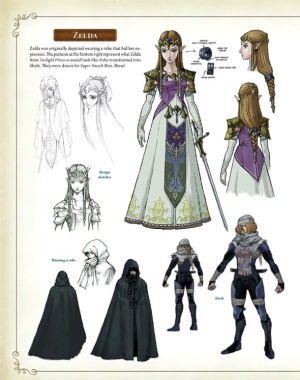
Video Game Book Reviews
To celebrate the Zelda series' 25th anniversary, Nintendo came up with a massive tome of lore and artwork. Seriously, this is the stuff Looney Tunes characters drop each other on the head: The hardcover book is 280 pages of strong paper thick, 9 inches wide and 12 inches high, and weighs a whopping 4 pounds, at least according to Amazon, I don't have book scales. It's heavy.
Its production was overseen by current series producer Eiji Aonuma, and with a foreword by Shigeru Miyamoto himself, it delivers a definite official timeline for those who ever cared about the series canon, or rather all three of them, as apparently most of the series takes place in split universes. But does the Hyrule Historia offer anything besides hardcore nerd bait for the hardcore fans?
The first disappointment comes right at the beginning: The title appears to have been a scheme to give a piece of Skyward Sword merchandise even more mainstream appeal, as the whole first chapter (about 60 pages) is basically just the official art book for that game. An extraordinarily well put together one, mind you, with tons of design notes and descriptions, and Skyward Sword is one of the more visually inspired games of the series, but still a rather weird start for a book titled Hyrule Historia. The same goes for the final 30 pages - they're just the promotional manga preview to the latest game in the series.
The advertised history really only fills the second chapter, which displays the aforementioned timeline-mess, before running down the historical events of each Zelda episode in chronological order. While the Skyward Sword section contained some behind-the-scenes info, this is all in-universe lore, and even Aonuma in his afterword declares that it all really doesn't mean much:
One thing to bear in mind, however, is that the question the developers of the Legend of Zelda series asked themselves before starting on a game was, "What kind of game play should we focus on?" rather than "What kind of story should we write?" (...) Because the games were developed in such a manner, it could be said that Zelda's story lines were afterthoughts.
Really the most interesting part is the chapter "Creative Footprints." Technically, this is once again an artbook section, but contains never-seen-before concept art for some of the older games (the well-known illustrations from the manuals are mostly collected in the history chapter). Unfortunately, they're in very small quantity for the NES games, and the designs for the later more serious games really aren't all that imaginative, considering we're talking about one of Japan's premier fantasy game series. The heavily stylized Wind Waker, Phantom Hourglass and Spirit Tracks, on the other hand, only speak to a very specific taste (at least when viewing the art outside of the context of the games). Twilight Princess features some cool monster designs, while the major characters look kinda bland, too. Some extra pages trace the changes in character design for Link, Zelda and Ganon, albeit with some strange omissions - seems Nintendo didn't have any high quality art for its main villain until Ocarina of Time.
The chapter ends with data sheets and short blurbs for all Zelda games Nintendo published internationally. It also confirms that Nintendo decided the outsourced CD-i games never existed, as the section "Elusive and Rare Zelda Titles" only mentions the GameCube compilation and the Satellaview games. A mention of the comic books or animated series is also nowhere to be found - this is certainly no HG101-grade coverage.
So, if you're an absolute fan of the series that hasn't missed a single game, and you're really into Zelda art and lore - especially Skyward Sword art and lore - then the Hyrule Historia will be just the thing for you. Everyone else might want to give it some extra thought whether or not they really want it. At least the price is very fair for such a huge book (RRP is US$34.99, but Amazon sells it for less than 20).

